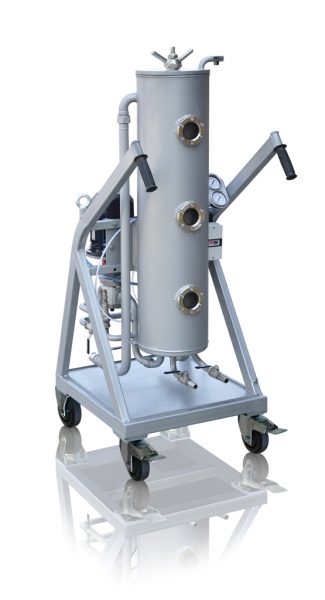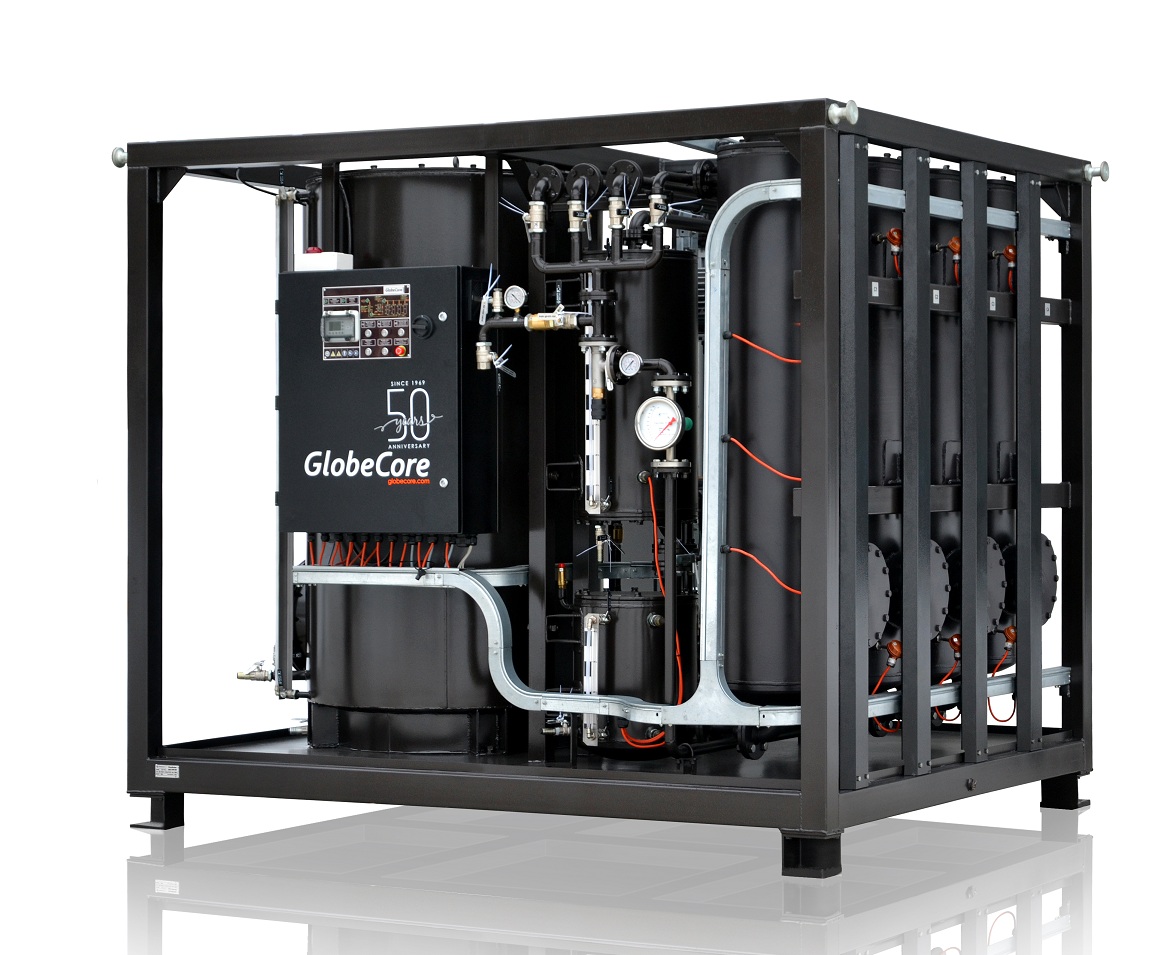Turbine oil lubricate and cool bearings of steam, gas and hydro turbines, as well as turbocompressors.
Turbine oils are subject to some detrimental factors, such as high temperature, hence the strict oil quality requirements:
- good oxidation stability;
- absence of sludge formation after long use;
- no emulsification with water;
- protection of steel surfaces from corrosion.
The quality of turbine oil decreases in use due to contamination with water and particulate matter. Sludge increases the rate of additive degradation and oil aging. Using contaminated oil causes increase of temperatures, premature wear and destruction of bearings and unstable governor system operation.
According to ISO 4406 recommendations, reliable operation of turbine units can be ensured with the purity of oil 15/12 or better, i.e. with control of the amount of 3 – 25 micron particles. Oil tanks of turbine units are often equipped with 250-500 micron mesh filters. This is clearly not sufficient to ensure the required purity of turbine oil. All turbine operators should own special filtration machines to prepare turbine oil for use and to keep it clean in use.
Complete purification of turbine oil

Purification of turbine oil with high water content

Water can enter the oil in many ways. One of these is condensation of stream from the seals of the turbine into the bearing case. Water can also condense in the bearings from the atmosphere. Oxidation of oil causes water formation as well.
Increased water content in the oil causes the following effects:
- sharp increase of oil oxidation rate (by a factor of 3-5);
- increased erosive and corrosive activity of the oil;
- increased ash content;
- increased danger of ignition of oil in contact with hydrogen;
- reduced flow of oil in the pipes etc.
GlobeCore has developed the CMM-CF machines to deal specifically with high water content in turbine oil. The CMM-CF units remove water by coagulation. When the oil passes through a special filter, water molecules aggregate into droplets and flow down into a settling container, from where the water is removed through a drain valve. The technology allows to process oil with more than 50% water, making the CMM-CF machines ideal for especially high water content.
Purification of turbine oil with high acidity
 Acid number is one of the most important parameters of turbine oil. It is an indicator of the oil aging. Acid number of fresh turbine oil must be within 0.04-0.07 mg KOH/g. If acidity increases to 0.1 mg KOH/g, it is recommended to also test the oil’s oxidation stability and sludge content. If this number exceeds 0.5-0.6 mg KOH/g, the oil is unusable and must be changed. Increased acid number indicates the oil has undergone changes due to aging. In this case the purification machines will not be able to restore the oil to the condition where it can be used. This is where oil regeneration technology, including adsorption, is required.
Acid number is one of the most important parameters of turbine oil. It is an indicator of the oil aging. Acid number of fresh turbine oil must be within 0.04-0.07 mg KOH/g. If acidity increases to 0.1 mg KOH/g, it is recommended to also test the oil’s oxidation stability and sludge content. If this number exceeds 0.5-0.6 mg KOH/g, the oil is unusable and must be changed. Increased acid number indicates the oil has undergone changes due to aging. In this case the purification machines will not be able to restore the oil to the condition where it can be used. This is where oil regeneration technology, including adsorption, is required.
The CMM-R regeneration machines have several columns filled with a special Fuller’s earth sorbent. Then the oil passes through the sorbent, it sheds aging products, returning all of the important oil parameters back to normal.
Fuller’s earth also removes necessary additives from the oil, so the CMM-R machine also includes an additive injection unit, which makes the regenerated oil fully usable.
The benefits of turbine oil purification equipment
Power and energy facilities that own the СММ-Т, СММ-CF and the СММ-R machines, enjoy important benefits in their operation:
- at least doubled oil lifetime;
- stable and reliable operation of lubrication and regulation systems;
- reduced costs of repairs, spare parts and oil changes;
- no failures which may be caused by the use of contaminated oil.

